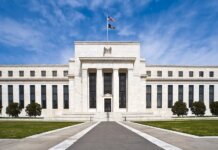REQUIRED READING: Over the last few years, it seems that everyone and everything have been ‘going green.’ Automobiles, food, clothing, homes and offices – even the future of the American workforce is being positioned to the so-called green jobs.
The ecological advantages of this hue are obvious. But slowly, the financial services industry is recognizing that there is some significant economical color play in this mix.
Historically, it is easy to understand why the financial services industry has been slow to embrace the green movement – this conservative, bottom-line-driven industry didn't seem to share common ground with the popular perceptions of the environmental activism sector, which gave the impression of putting the planet's future ahead of today's profits. Today, however, things are changing, and the seemingly parallel tracks between financial services and environmentalism are now seeing significant overlap.
This alignment began in the investment world. Less than 20 years ago, there was nary a green mutual fund in the market – much less an actual market. Today, however, there are dozens of green mutual funds, and this $3 trillion market has a name: the Socially Responsible Investment Fund market.
In the commercial real estate world, energy efficiency, in both new properties and the retrofitting of older buildings, has become more prevalent. The U.S. Green Building Council, through its Leadership in Energy and Environmental Design (LEED) program, has coordinated a high-profile certification program that has set new standards for environmental suitability. More than 14,000 properties now carry LEED certification, which has added more than a little prestige to the buildings and their owner/operators.
On the consumer side, things have been progressing, albeit at a somewhat slower pace. So-called ‘green loans’ that support environmental sustainability are increasing in visibility, due to their appeal in regard to corporate social responsibility and traditional return on capital. At a time when energy prices are erratic and often expensive, the push for efficiency has never been more pressing.
Strangely, many residential originators are still lagging behind in this area. While the green building market on the commercial side of the industry is literally doubling in size every six months, green-tinged residential lending is still on the fringes.
The EEM appeal
At the moment, there are only two market-based mortgage products that address this concern: the energy-efficient mortgage (EEM), which is used primarily for new building, and the energy-improvement mortgage, which is primarily used for existing homes. These mortgages have been around for many years, but they are ignored by most banks; the New York Times estimates that they make up less than 1% of the home-loan market.
For those who are unaware of how it works, an EEM is rooted in a commonsense underwriting concept: If the home costs less to operate, the client can afford a bigger home, a bigger loan, or both. In any event, the energy-efficient home is a more durable asset with a lower risk gradient. That means the loan itself is a better loan – one that is less risky and more likely to perform.
However, these mortgages require extra paperwork in order to pass the home energy rating system developed by the U.S. Department of Energy (DOE) and the Environment Protection Agency (EPA). The process also requires an energy audit, which can be time-consuming and costly. Not surprisingly, many lenders would prefer not to offer this product – and those that have EEMs in their product lineup rarely go out of their way to publicize them.
Although EEMs require more paperwork and planning before closing, they operate in the same manner as a traditional mortgage. These loans can easily be sold into the secondary market – and, in many ways, they can even shine a bit brighter, because the secondary markets are based on the fact that securities have a reasonable expectation of performance. In order to have a secondary market to serve, we need to have securities that can be expected to perform.
This refers to the concept of the risk gradient: The higher the gradient, the less likely the security is to perform. Conversely, the lower the risk gradient, the more likely the security is to perform. Because EEMs go through a thorough pre-closing procedure, the risk related to them can easily be considered to be lower.
So how do we magically inject a healthy dose of low risk-gradient securities into today's market, where risk aversion, lack of trust in property values and pessimism associated with borrower performance rule the day?
Consider this thought: If you make a building more energy efficient, it will cost less to operate and even have a higher resale value. It makes perfect sense, considering energy-efficient buildings cost less to operate, thus making them more affordable. This means more people can qualify to own them, because power and heating/cooling costs have a lower impact on household budget scenarios – a very nice touch in today's economy.
Furthermore, people with energy-efficient homes can be considered less likely to default on the loans used to secure them, due to a more stable cost of ownership and the confirmation during the energy audit portion of the EEM pre-closing procedure.
Out of Washington
At the federal level, residential EEMs are nationally available through two agencies. The Federal Housing Administration (FHA) has an EEM program that allows lenders to add 100% of the additional cost of energy-efficiency improvements to an approved mortgage, provided that the additional costs do not exceed $4,000 or 5% of the home's value, up to a maximum of $8,000 (whichever is greater). FHA's program also covers manufactured housing.
The Department of Veterans' Affairs also has an EEM program that allows qualified military borrowers to finance energy improvements for purchasing an existing home. This program caps the energy improvements between $3,000 and $6,000.
Another option is the federal ENERGY STAR mortgage program. ENERGY STAR is a joint program by the EPA and the DOE in 1992. The mortgage program, which began with Maine and Colorado and has recently become available in 16 other states through HomeFirst Mortgage Corp., offers borrowers an opportunity to lower their energy consumption while making significant, affordable improvements to their homes, which will also lead to a reduction in the overall carbon emissions associated with the energy used in their homes.
The ENERGY STAR mortgage program demonstrates that financing can be a useful tool for enhancing the success of investing in energy-efficient homes by lowering borrowing costs, as well as the importance of utilizing a network of qualified energy auditors and contractors to ensure that cost-effective energy-efficiency improvements are realized.
ENERGY STAR mortgages incorporate the cost of energy-efficiency investments, allowing borrowers to pay for them over the life of their loans, including interest deductions from their federal and state income taxes. A key ENERGY STAR mortgage benefit is that a borrower can finance energy-saving improvements to their homes without paying more than they would for a typical mortgage.
Participating lenders also offer borrowers additional financial benefits, such as discounted mortgage rates, reduced loan fees, assistance with closing costs or another benefit that reduces the cost of the mortgage compared with financing that would otherwise be available to the borrower.
In the secondary markets, there is some activity unique to EEMs. Fannie Mae lends up to 5% for ENERGY STAR-qualified single-family, owner-occupied units, while Freddie Mac offers EEMs for one- to four-unit dwellings. But neither government-sponsored enterprise currently has mortgage-backed security programs that are specific to green-lending, though Freddie Mac has recently considered offering a $500 million green mortgage-backed security in conjunction with the Capital Markets Partnership, a Washington D.C.-based think tank whose main work focuses on green secondary market transformation.
As we enter a new decade, green lending seems like natural progression. Lending institutions of all kinds would be well served to add an intelligent green lending program, and secondary marketing executives need to pay more attention to this business strategy.
Jeffrey L. Cole is CEO of myEnergyLoan LLC, based in Tampa, Fla. He can be reached at jcole@myenergyloan.com.











